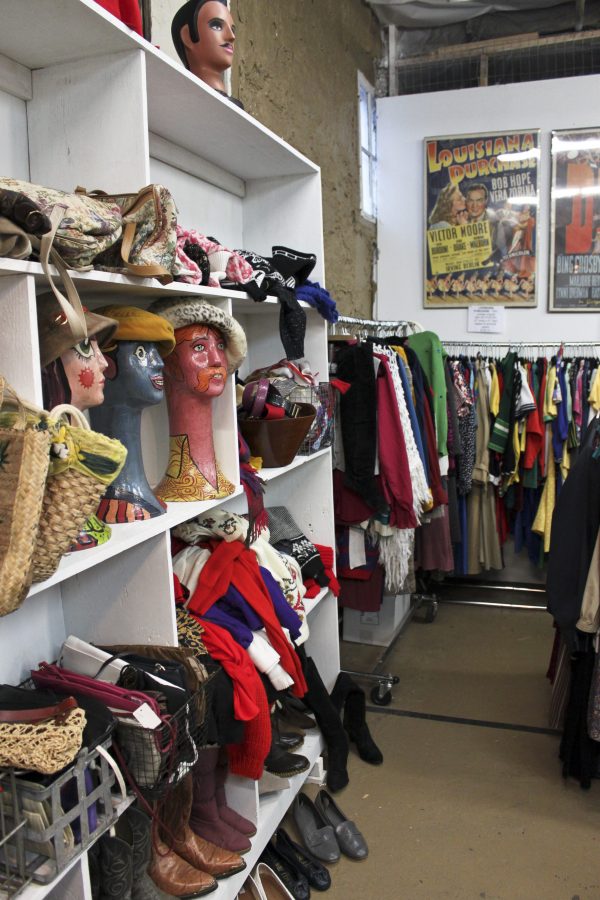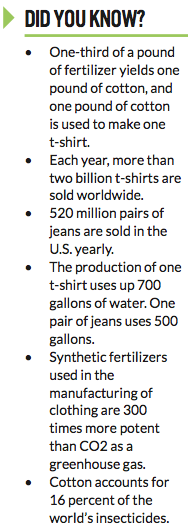
Part of the appeal of sifting through racks of used clothing is the thrill of the hunt. Some avid thrifters see potential in those musty racks of used clothing.

Shops like highland Row Antiques sell used clothing.
Aside from providing an adventurous experience and a wardrobe with a cheap price tag, thrifting provides an opportunity for reducing the environmental cost of clothing.
To understand the environmental impact new clothing has, you have to understand how new clothing is manufactured.
“The textile industry is shared between natural fibers such as wool, silk, linen, cotton and hemp, and man-made ones, the most common of which are synthetic fibers (polyamide, acrylic) made from petrochemicals,” explained Jennifer L. Asman, Georgia State’s sustainability program coordinator.
“Most of the clothes in our wardrobes contain polyester, elastane or Lycra. Their manufacture creates pollution and they are hard to recycle, with nylon taking 30 to 40 years to decompose.”
The environmental impact of clothing is not limited to synthetic fibers. The manufacturing process to make new clothes requires uses vast amounts of water— 700 gallons are used in the production of one cotton t-shirt.
The affect new clothing production has on the environment has only grown with the shift of the fashion industry’s promotion of quicker, more disposable consumption. As clothing has become cheaper to make, clothing manufacturers have responded by creating more stock, leading to more waste products.
“Since 1980, textile consumption in the U.S. has increased five-fold,” Asman said.
“This means that every man, woman and child now buys more than 81 pounds of textiles every year. This includes 66 pounds of clothing, footwear, towels, sheets and pillowcases, of which about 10 pounds will be reused or recycled, leaving 56 pounds to be thrown in the trash.”
Students can reasonably reduce the impact their clothing has on the environment by buying used clothing.
Thrifting is both an adventure and a practice in sustainability. Shopping at thrift stores or consignment shops shows that you are willing to reduce the amount of raw materials and energy used in the manufacturing of new clothing.
Donating unwanted items at thrift stores can also reduce the environmental impact of your clothing by insuring that it will be reused—not thrown in a landfill.
“By re-wearing and reusing clothes, we save natural resources, reduce pollution and prevent the emission of climate changing greenhouse gases. So every item of clothing saved is a big benefit for the planet,” Asman said.
For more information about how to implement more sustainable practices in your life, check out gogreen.gsu.edu or visit the Office of Sustainability at 10 Park Place, Office 460 C.
Side Bar Facts:
One-third of a pound of fertilizer yields one pound of cotton, and one pound of cotton is used to make one t-shirt.
Each year, more than 2 billion t-shirts are sold worldwide.
520 million pairs of jeans are sold in the U.S. yearly.
The production of one t-shirt uses up 700 gallons of water. One pair of jeans uses 500 gallons.
Synthetic fertilizers used in the manufacturing of clothing are 300 times more potent than CO2 as a greenhouse gas.
Cotton accounts for 16 percent of the world’s insecticides.
Other possible sidebar
Clothing Aftercare
Washing your clothes is a necessity; however, environmental impacts come from this process. Between 75 and 80 percent of our clothing’s life-cycle diminishes due to washing and drying.
- Make sure to only wash full loads of laundry to cut down on the large amount of water used in a standard washing machine.
- Wash clothes in cold water. It cleans clothes just as well as warm water, and cuts down on energy used to heat the water.
- Use phosphate-free and enviro-friendly detergents if you can afford to.
- Use sunshine instead of bleach if you have the time. Lay your whites in the sun to let them bleach naturally; you can take them outside while they are still soapy and hang them where they will receive at least five hours of direct sunlight.

